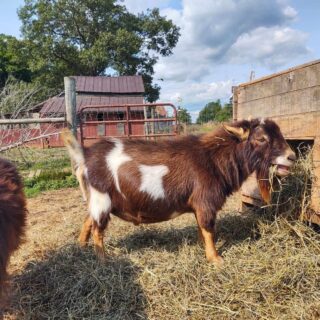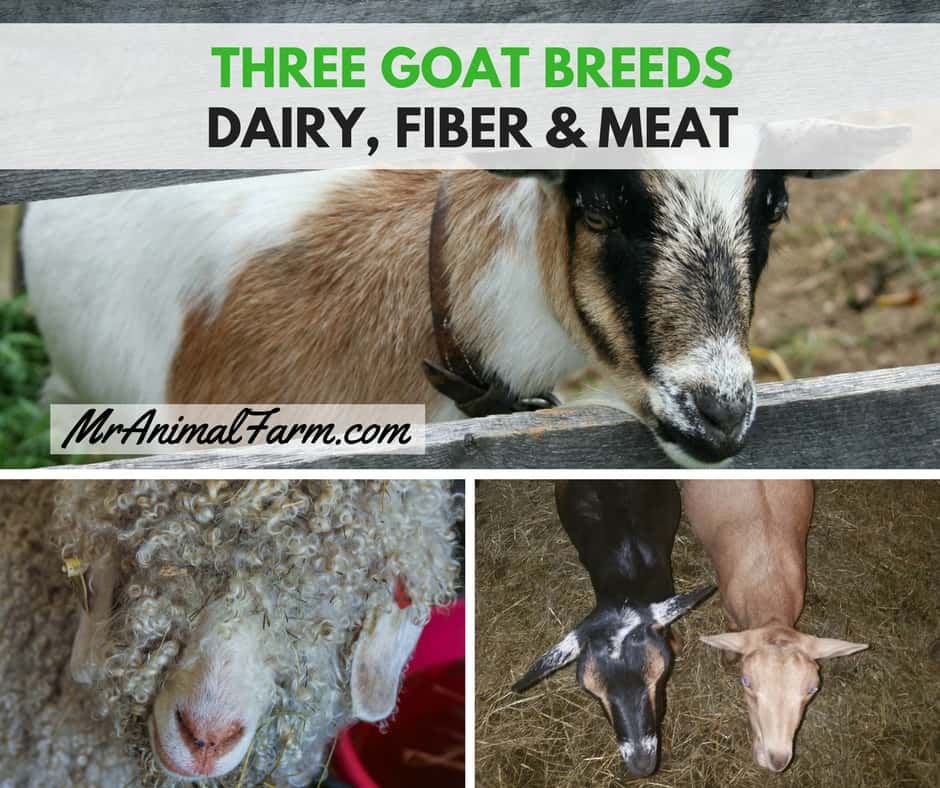
You can break goat breeds down into three general categories or types of goats: dairy goats, fiber goats or meat goats. When you are thinking about how to buy a goat you will need to decide on a breed first. And, therefore, you should know what each goat breed is used for.
Afterall, it wouldn't really do you much good to get one of the goat breeds that is a meat goat when you are wanting to get goats for milk or vice versa. Some goat breeds are dual purpose breeds as well, so that may also play a factor in your decision.
Dual purpose goat breeds are types of goats that can be used for two purposes. For example, a goat breed that does well for both milk and fiber would be one of the dual purpose goat types.
If you need more help on what goat breed to get as well as where to get your goats, check out Getting Started with Goats for all your answers! Fortunately, no matter which type you get, you can still use the same goat supplies, goat milking supplies, goat medical supplies, and kidding supplies.
You will also need to take some time choosing hay for your goats or perhaps finding a good Chaffhaye dealer.
There are so many different kinds of goat breeds out there
Here we are going to look at a few breed examples for each of the three main types of goats:
Types of Goats #1 - Dairy Goats:
The purpose of breeding and keeping dairy goat breeds is for their ability to produce high quality and high quantities of milk. There are multiple reasons to get dairy goats.
This is one of the most popular types of goats. These goat breeds can help you provide your own milk (which can be a money savings as well as health benefit).
Additionally, dairy goat breeds can be used if you are looking to make money raising goats. Since they have multiple products that you can use to sell - milk, soap, kids.
So, if you decide that dairy goats are the type of goat for you, what specific dairy goat breeds should you be looking at?
Nigerian Dwarf Goats
Ok, so we are probably a little biased towards this goat breed since this is the breed that we raise. Nigerian Dwarf are friendly, miniature breeds of goats that have high butterfat content in their milk. This high butterfat makes their milk sweet and delicious.
Nigerian Dwarf goats have become one of the most popular goat breeds due to their wonderful milk and small size. These qualities make them perfect for a small farm or homestead.
They are also friendly and easy to handle, so most anyone can work easily with this goat breed.
Already know what goat breeds you like, but want to know more about breeding goats?
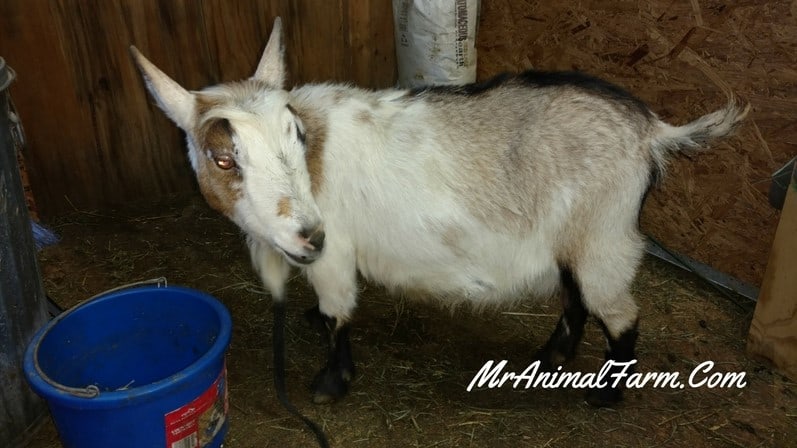
Alpine Goats
Alpines are a medium-large goat that produce considerably more milk than the smaller Nigerian Dwarf goats. This is due to the fact that they are larger that Nigerian Dwarf goats.
Alpines are considered to be friendly and great for use on homesteads or goat dairies. So, if you are looking for one of the goat breeds that will produce the most milk, Alpines might be the right type of goat for you!

Nubian Goats
Nubians are cute, floppy eared goats. Their ears are one thing that helps them stand out from other goat breeds.
They are around the same size as Alpines. However, they do not produce quite as much volume (usually) as an Alpine.
Nubians, like Nigerian Dwarf goats, have a higher butterfat content in their milk.
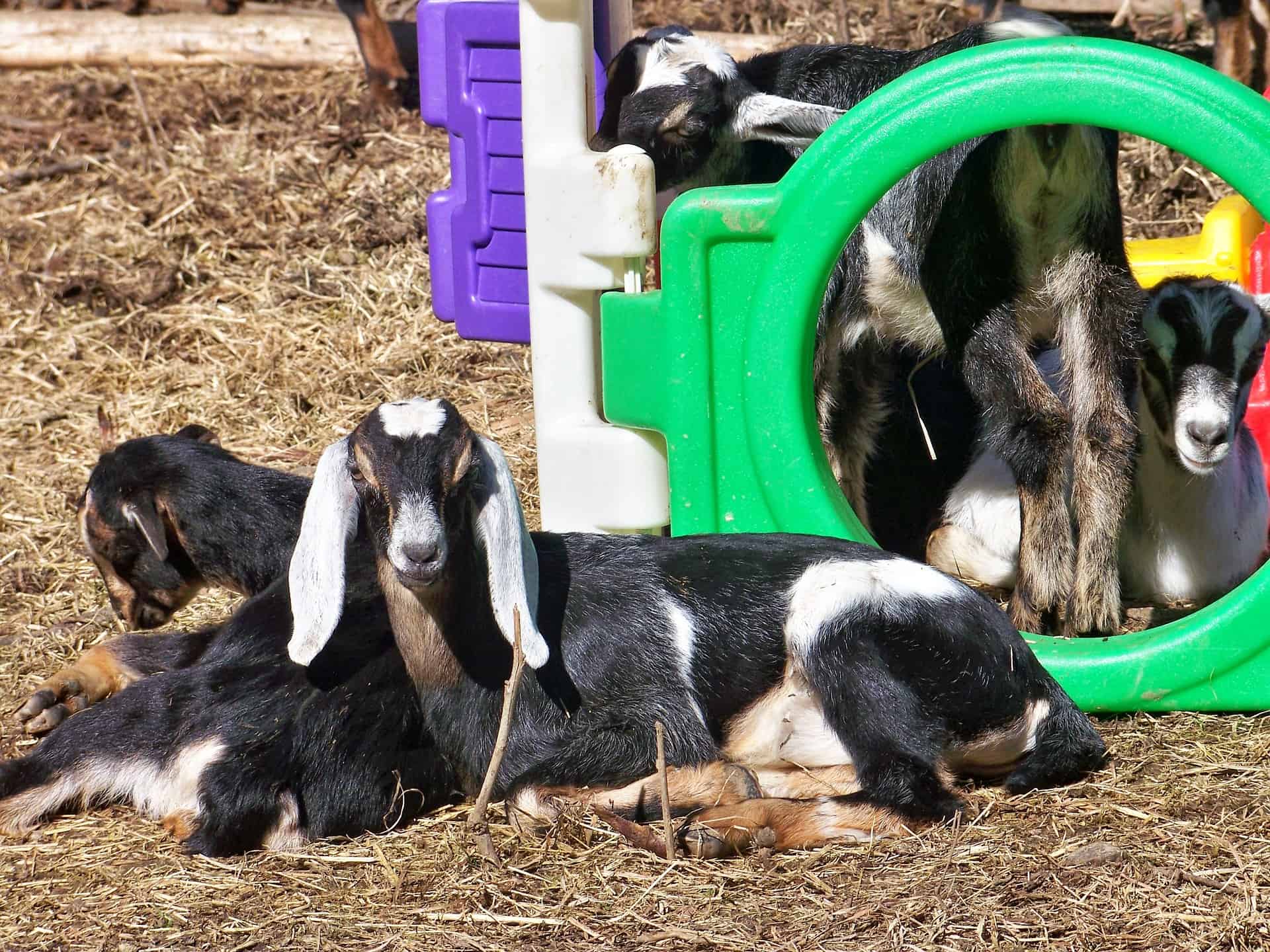
There are even more dairy goat breeds you can check out if you are looking for goat breeds with good milk production.
Need some help to keep your goats healthy and maintained? The G.O.A.T Herd Management Binder has you covered from supplies to routine care reminders.
Types of Goats #2 - Fiber Goats:
Fiber goats are one of the more unique types of goats. Fiber goats are goat breeds that you use for their hair.
These types of goats are also sometimes called hair goats or wool goats. Fiber goats are valuable throughout many cultures because of how versatile their hair can be in textiles.
Their hair has special qualities that make it good to use for making yarn and other spun fiber products.
You generally shear these goats to collect their fiber (it will grow back so that you can shear them again). You can leave the fiber raw and sell it.
Or you can dye it and spin it to make yarn, clothes, blankets or other processed and finished products that you can sell (or use yourself).
If you are really talented with spinning you can sell the products you make as a great way to make money homesteading.
With all of the different uses for their hair, this is one of the more valuable types of goats since they have multiple possible revenue streams with their products.
Cashmere Goats
Cashmere goats, not surprisingly, are the source of cashmere fiber products. Cashmere goats are not actually one specific breed, but a group of goat breeds that have cashmere hair.
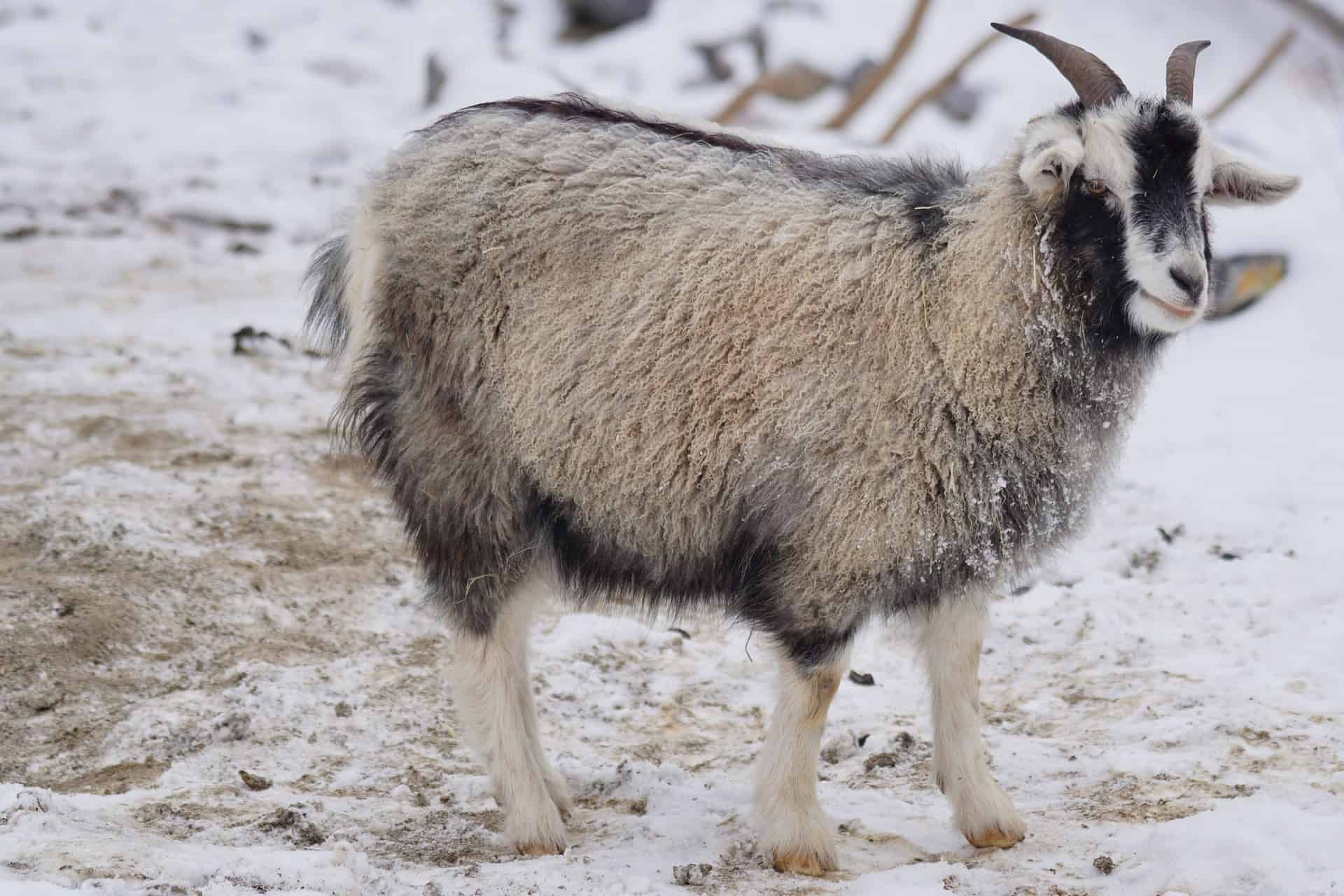
Angora Goats
Angora goats' fiber is mohair. Their hair is long and wavy. They are really adorable with their curly locks. They can produce a large percentage of fiber annually.

Pygora or Nigora Goats
These are mini fiber goats. They come from Angora goats that are crossed with Pymgy (Pygora) or Nigerian Dwarf (Nigora), so that you hopefully get the high quality fiber properties of the angora goats in a smaller package.
These goat breeds are great for smaller homesteads where you might not have as much room for standard size goats.
Types of Goats #3 - Meat Goats:
Farmers will raise meat goats for meat. Meat goat breeds will go to the butcher when they are large enough and can make a variety of different foods.
Spanish Goats
Spanish goats (originally from Spain, hence the name) are a very hardy, large breed of goat. They are great brush clearers. Spanish goats are famous for producing a large amount of meat with smaller input (food).
Boer Goats
Boer Goats can get to be huge. They are distinguishable because they are a long eared goat. They are also fast growing and are the largest goat breed (they can go to market at weaning age usually). Additionally, boer goats can breed year round - which makes it easier to produce kids.
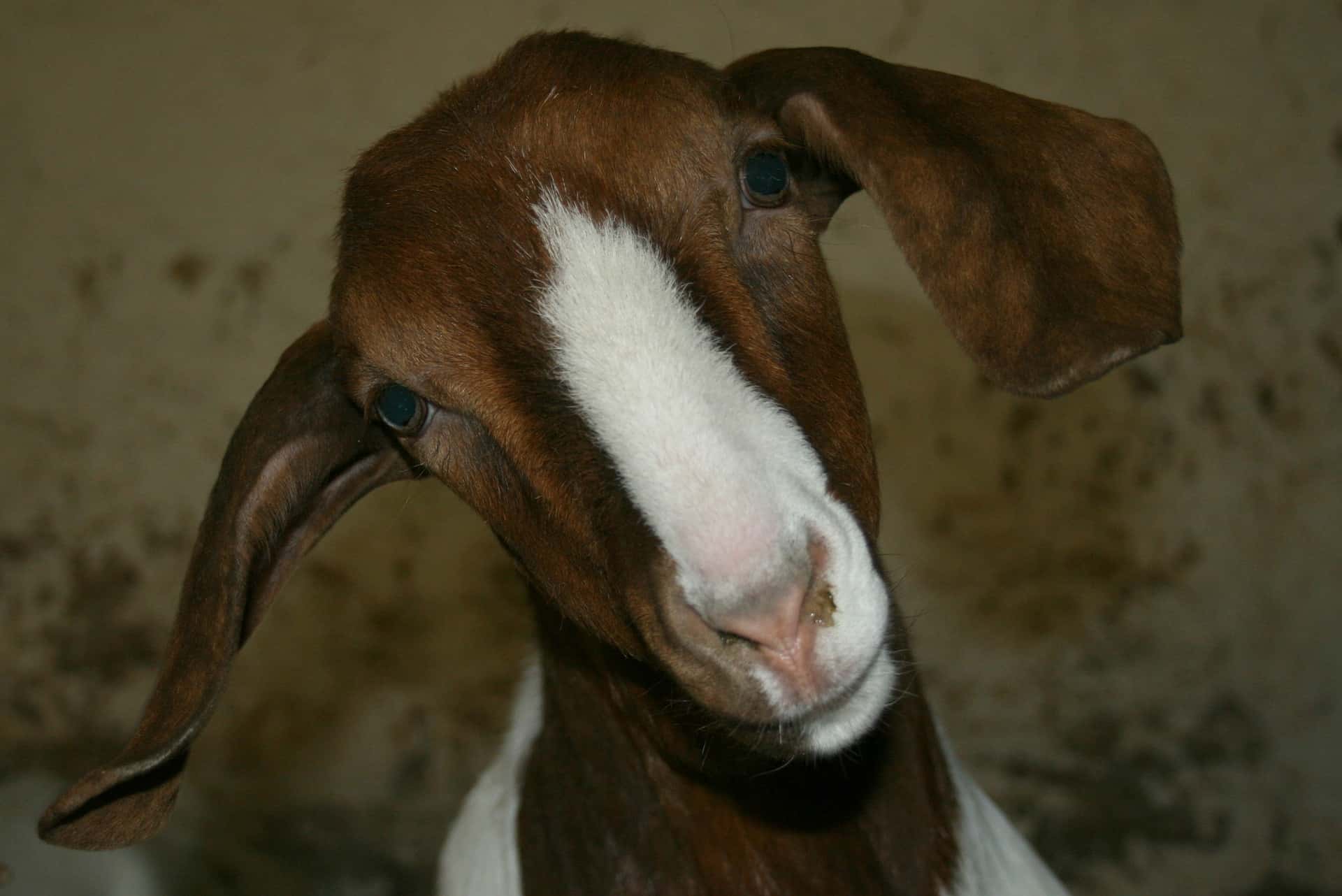
Kiko Goats
Kiko goats are one of the newer goat breeds. They are from New Zealand orginially. The aim of breeding kiko goats was to create a hardy, fast growing goat breed.
Obviously, when you are raising meat goat breeds, you want one that will be easy to care for and that will mature and get to size as fast as possible. This allows you to put minimal time and money into the goat before it is butchering age.
If you need more help with deciding on what goat breeds, or types of goats to get. Check out our eCourse: How To Get Started Raising Goats!
So, now you should have an idea of the types of goat breeds out there as well as specific examples of each. What goat breed do you find most interesting?
Final Word
Now that you know what different types of goats are out there and their many uses, you can start figuring out which kind you want to get. Your next steps will be finding out how much it costs to feed a goat, what goats eat, and how much a goat costs other than the initial price tag.
Goats can be a lot of work but they are some of the most fulfilling and loving animals you can raise.
If you need more help keeping your goats healthy and well taken care of, check out the G.O.A.T. Herd Management System - worksheets, calculators, supply management and more to keep your goats in tip top shape while cutting down on time.

